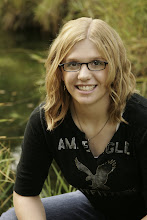Sorry...just more Viennese History...I'm hoping to take a trip to Prague or Budapest (or both) soon though so sit tight. :)

The Burgtheater:
-The Burgtheater is known as the most prestigious stage in the German-speaking world. Originally the theater was built during Maria Theresa's reign but was replaced in 1888 by the Italian Renaissance style building that is there today, which was designed by Karl von Hasenauer and Gottfried Semper (does anyone else get a kick out of all these old german names?! I know I do!) In 1987 it was closed for refurbishment because it had been discovered that there were several seats that had no view of the stage. (haha good one Hasenauer and Semper!) 48 years after that it was devastated by a bomb leaving only the side wings. But due to a lot of fantastic and successful restoration, it is now just as beautiful as ever!
Neues Rathaus (New City Hall):
- The new City Hall was built during the years of 1872-1883 to replace the Altes Rathaus* (old city hall) and is the seat of the Vienna City. Friedrich von Schmidt, the architect, was chosen by the authorities in a competition for the best design and chose to go with a Neo-Gothic style. The building has 7 courtyards where summer concerts are held every year. (I actually attended 2 of these summer productions, one being the Cinderella Ballet and the other a really creepy opera about...who knows what....basically...it made me miss basketball!!) On all four sides of the building are Neo-Gothic arcades and statues of Austrian worthies including the very prominent Habsburgs**. Underneath the city hall is a very popular restaurant called Wiener Rathauskeller.
* Altes Rathaus - In 1309 2 brothers by the names of Otto and Haymo Neuburg conspired to overthrow the Habsburgs but were unsuccessful. Their property was confiscated and donated to the city. Over centuries the site was expanded to form the complex of buildings that served as the city hall until 1883. In one corner of the Altes Rathaus is the Andromeda Fountain which is located in the main courtyard and was the last piece of work designed by Gerog Raphael Donner in 1741. In another area is a late 13th century chapel called the Salvatorkapelle, the only surviving building of the medieval town house. My favorite attraction of the Atles Rathaus is the Austrian Resistance Archive. Many Austrians welcomed Hitler's takeover in 1938 but in this Archive it pays tribute to the distinguished minority who resisted Nazism.
** Habsburgs - The Habsburgs began centuries of rule over Austria following the death of Friedrich II in 1246.

Parliament:
- Theophil Hansen, a Danish born Architect chose a specifially Neo-Classical style when designing the parliament building. It was originally constructed to serve as the Reichstrat building (the parliament building of the Austrian part of the Hapsburg Empire). It's construction took 10 years, beginning in 1874 and ending in...oh come on, it's simple I'm sure you can do that math problem yourselves. :) It's entrance is raised above street level and can only be approached by a very broad ramp. The ramp itself is decorated with marble figures of Greek and Roman historians and at the foot of the ramp are the bronze Horse Tamers which were designed by Josef Lax. After the collapse of the Habsburg empire on November 11, 1918, the parliamentary deputies proclaimed the formation of the republic of Deutsch-Osterreich and was renamed the Republic of Austria in 1919. Half of the parliament building was completely destroyed in WWII. Although most reconstruction was successfully completed by June 1956, the restoration of some damaged artwork only began in the 1990s.
- "Austrian Parliament: The Austrian parliament is ocmposed of two houses, the lower house, or Nationalrat, the upper house, or Bundesrat. The Lower House has 193 seats and it's member are elected for a four-year term by proportional representation. it comprises the governing party and the opposition. The Upper House is ocmposed of elected representatives from Austria's nine provinces (Burgenland, Kaernten, Niederoesterreich, Oberoesterreich, Salzburg, Steiermark, Tirol, Vorarlberg, and Wien) and tis function is to approve legislation passed by the Lower House. Bills may also be presented to parliament by the general public or by the Chambers of Labour (representing consumers and employees) and the Chambers of teh Economy (representing employers and industry_. The federal President is elected for a six-year term and is largely a figurehead. Theoretically, he or she has the power to veto bills and dissolve parliament, though this has never occurred. " -as stated in Eyewitness Travel Guides-Vienna :)

Hofburg:
- In the Hofburg complex there are former imperial apartments, several museums, a chapel, the Austrian National Library, a Winter Riding School and the President of Austria's offices. For over 6 centuries it was the seat of Austrian power. Seven centuries of architectural development can be seen in this complex. Although there are many attractions in the Hofburg complex, the one that really caught my attention was the Neue Burg. The reason being because the Neue Burg was where Hitler stood and gave his speech welcoming Austria into the union on March 15, 1938.
-http://www.thirdreichruins.com/vienna.htm Check out this website. It's really neat to see picture of places I've been and see that not that long ago this place was crawling with Nazis! It's also kind of cool...actually no, on the contrary it's extremely sickening to be walking or standing somewhere and know that one of the most evil and historical men known to the earth also stood or walked in that exact same spot (or at least very close).



Wow, Colie! You are more of a history nerd than my own husband! lol No really, I loved this post. You are going to be so happy that you blogged this because it will make an awesome book you will have forever. When you get home I'll teach you all about turning a blog into a book if you haven't already figured it out.
ReplyDelete